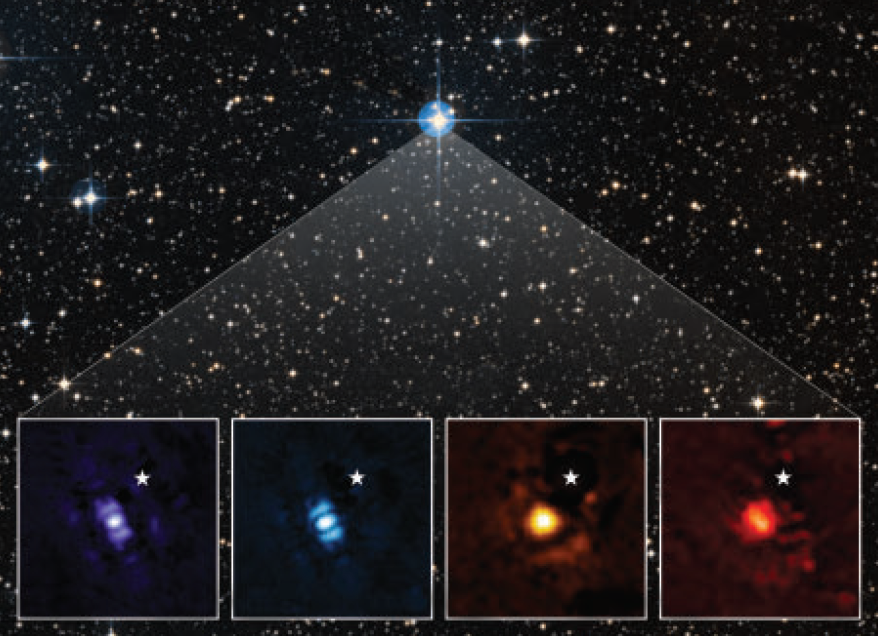
The James Webb Space Telescope (JWST) has opened a chapter in our exploration of exoplanets. It recently captured the direct image of a planet, outside our solar system providing fascinating insights into the atmosphere of this distant world. These groundbreaking achievements demonstrate the capabilities of JWST as a tool for observing exoplanets representing a significant milestone in our ongoing quest to unravel the mysteries of the universe.
A Glimpse Beyond the Solar System
Astronomer Aarynn Carter and her team from the University of California Santa Cruz focused their attention on HIP 65426b an exoplanet located 300 years away from Earth. This faraway celestial body orbits its host star at a distance than 100 times greater than Earths orbit around the Sun. With a mass seven times that of Jupiter, HIP 65426b is relatively young—estimated to be between 10 and 20 million years old—which makes it an intriguing target for investigation.
Unique Characteristics That Set HIP 65426b Apart
What makes HIP 65426b particularly interesting and well suited for study with JWST is a combination of factors. Its size, distance, from its star and youthful age all contribute to its detectability. Make it stand out among other exoplanets.
The act of measuring photons from a planets atmosphere, simple as it may seem showcases the advanced capabilities of the JWST.
A Glimpse into the Past and the Future
The search for exoplanets has resulted in over 5,000 discoveries orbiting stars outside our system. However most of these exoplanets were detected indirectly by observing the effects they have on their parent stars or by observing decreases in starlight as they pass in front of telescopes. Directly observing exoplanets poses a challenge. It requires blocking starlight to allow the planets own light to shine through—a process that has been successfully achieved for only about 20 exoplanets so far.
JWSTs Unprecedented Vision
In a breakthrough the JWST recently observed HIP 65426b using four infrared wavelengths that had not been explored before for exoplanet research. These wavelengths hold potential for unraveling insights into planetary formation and atmospheric composition. The groundbreaking capabilities of JWST have ignited excitement within the community with astrophysicist Sara Seager, from MIT stating that “direct imaging is our future.” The instruments performance has surpassed expectations promising discoveries in the years ahead.
A Sneak Peek, into the Spectrum of an Exoplanet
Although the team has not conducted a study on HIP 65426bs atmosphere yet they have made an achievement by capturing its initial spectrum—a detailed analysis of light across different wavelengths. This accomplishment lays the groundwork for exploration into the chemistry and atmosphere of the planet.
Exploring the Realm of Brown Dwarfs
In a discovery researchers employed JWST to capture the spectrum of an object orbiting another star called VHS 1256b. This intriguing entity blurs the boundary between a planet and a star categorizing it as a dwarf. These findings offer insights into the nature of bodies and their puzzling characteristics.
JWSTs Groundbreaking Encounter with Carbon Dioxide
JWSTs capabilities extend beyond imaging to highly valuable contributions. In a revelation accepted for publication in Nature, planetary scientist Peter Gao and his team present evidence of carbon dioxide (CO2) in the atmosphere of an exoplanet named WASP 39b situated approximately 700 light years away, from Earth. During an eight hour observation period JWST scrutinized starlight passing through WASP 39bs atmosphere as it transited between its host star and the telescope.
The study of how starlight’s absorbed by CO2 molecules in the atmosphere of a planet has provided insights, into its early formation and composition.
The Path Ahead
As the JWST pushes the boundaries of exploring exoplanets astronomers are excited to utilize its capabilities to discover the presence of CO2 and other molecules in the atmospheres of planets like those orbiting TRAPPIST 1. These Earth sized exoplanets, located at the distances from their stars to support liquid water offer promising opportunities in our search for signs of extraterrestrial life.
In summary the James Webb Space Telescope has ushered in an era of exploring exoplanets. Its groundbreaking abilities offer a glimpse into the mysteries of our universe. Whether through imaging or spectral analysis JWST continues to redefine our knowledge about bodies and their atmospheres. With each revelation we come closer to unraveling the secrets of exoplanets and uncovering their potential, for hosting life beyond our system.
